
 Authoritative military publication specializing in light weapons!
Authoritative military publication specializing in light weapons!
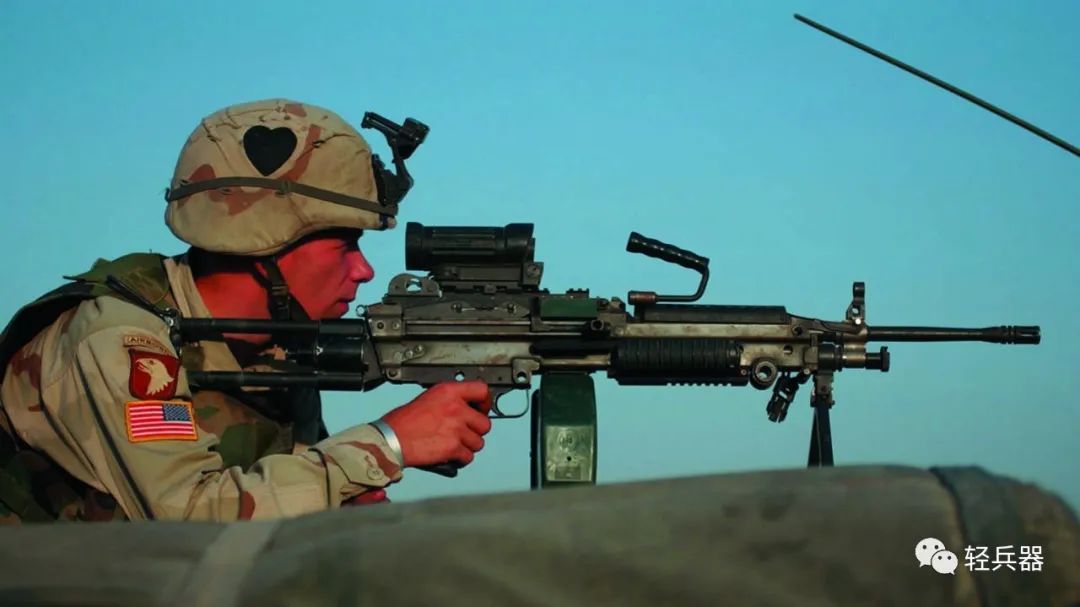
Origins of the IAR Light Machine Gun Project
Throughout military history, advancements in technology have always driven changes in combat tactics. The emergence of the powerful yet cumbersome Maxim machine gun turned the infantry’s assault on pre-established positions into a nightmare, while the introduction of lighter and more portable light machine guns allowed small infantry squads to achieve significant firepower. This led to a shift from linear assaults by large units to tactical formations involving small groups, division of labor, and concealed advances. Light machine guns became crucial offensive and defensive weapons, with nearly all infantry units post-World War II structuring their tactical operations around them. The organization of US infantry squads is a typical example.
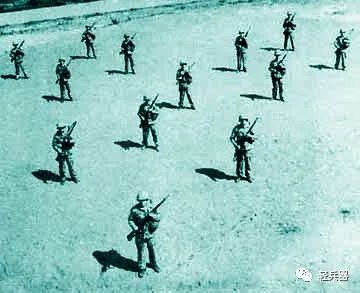
In 1944, the US Marine Corps had a 13-man squad organized into three 4-man fire teams, plus one squad leader, based on a “triangular” concept.
The concept of establishing “fire teams” around light machine guns was first proposed by the US Marine Corps. Initially, during the 1912 US intervention in Nicaragua, the benefits of such a structure were recognized. However, the true form of the “fire team” emerged after the Marine Corps equipped itself with the Browning Automatic Rifle (BAR, typically used as a light machine gun), maturing during World War II. In fact, until just before the outbreak of World War II, the Marine Corps infantry squad was still a 9-man unit with only one BAR; it wasn’t until 1942 that the squad size was expanded to 13 men. By 1943, based on experiences from the Pacific War, the number of BARs was increased to two per squad, but the squad size was reduced to 12 men. It wasn’t until 1944 that the squad evolved into a structure of three 4-man fire teams and one squad leader, with each fire team equipped with one BAR, totaling three BARs per squad. This structure has been maintained to this day. The US Army’s infantry squad remains at 9 men, including two 4-man fire teams and one squad leader.
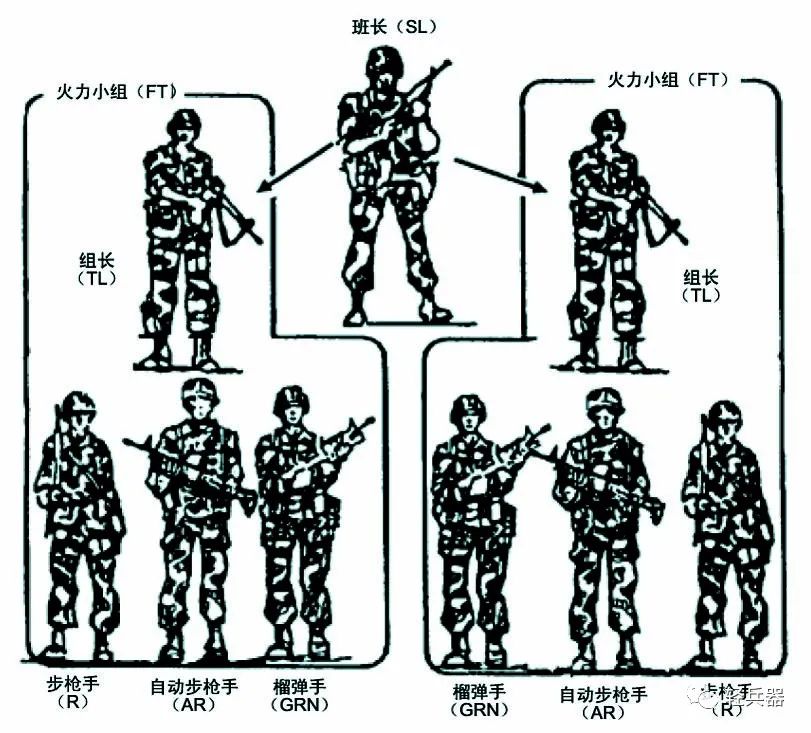
The modern US Army infantry squad consists of a squad leader (carrying an M16 or M4), an automatic rifleman (carrying an M249), a grenadier (carrying an M16/M203), and riflemen (carrying M16s), with riflemen sharing some ammunition with the automatic rifleman and grenadier.
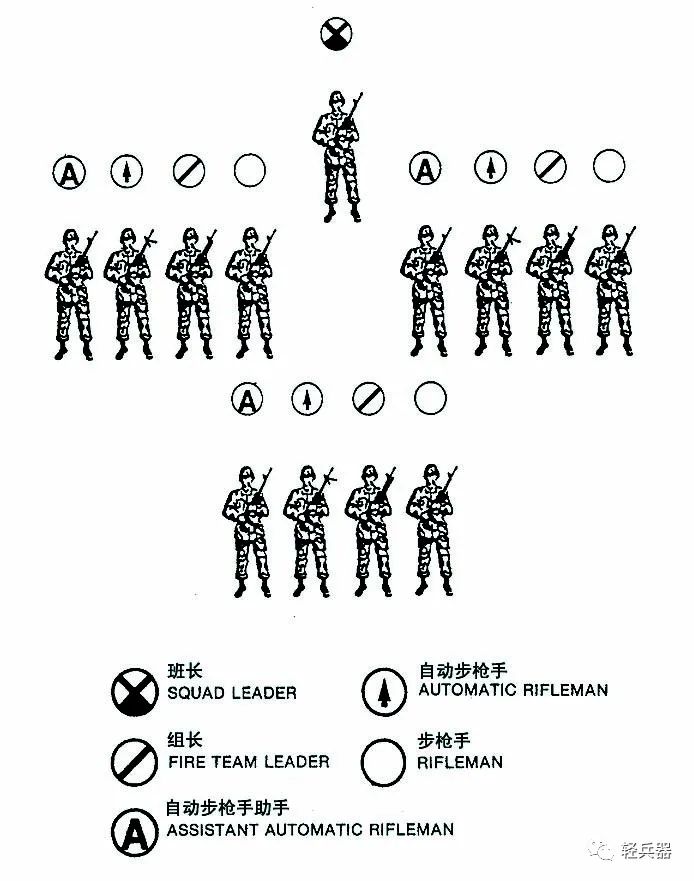
The modern US Marine Corps infantry squad structure. At first glance, the main difference from the Army is the addition of a fire team, but the organization within the fire team is also different. The Marine Corps fire team includes a team leader (carrying an M16/M203), an automatic rifleman (carrying an M249), a rifleman (carrying an M16), and an assistant automatic rifleman (carrying an M16).
During the early Vietnam War, when the US military equipped the 7.62×51mm M14 rifle, the BAR was withdrawn to simplify logistics. Two alternative light machine gun options were proposed: one was an improved M15 light machine gun based on the M14, and the other was the much heavier M60 medium machine gun. However, both trials failed; the M15 was never fielded, and the M60 became a platoon-level weapon. Fortunately, the M16 rifle, capable of automatic fire, quickly replaced the M14 semi-automatic rifle, allowing US infantry squads to maintain strong suppressive fire in close combat.
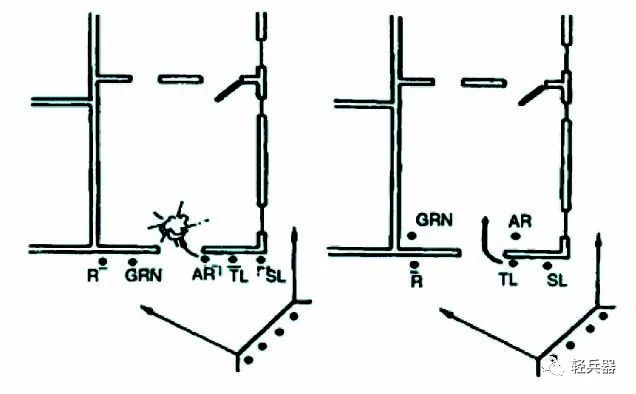
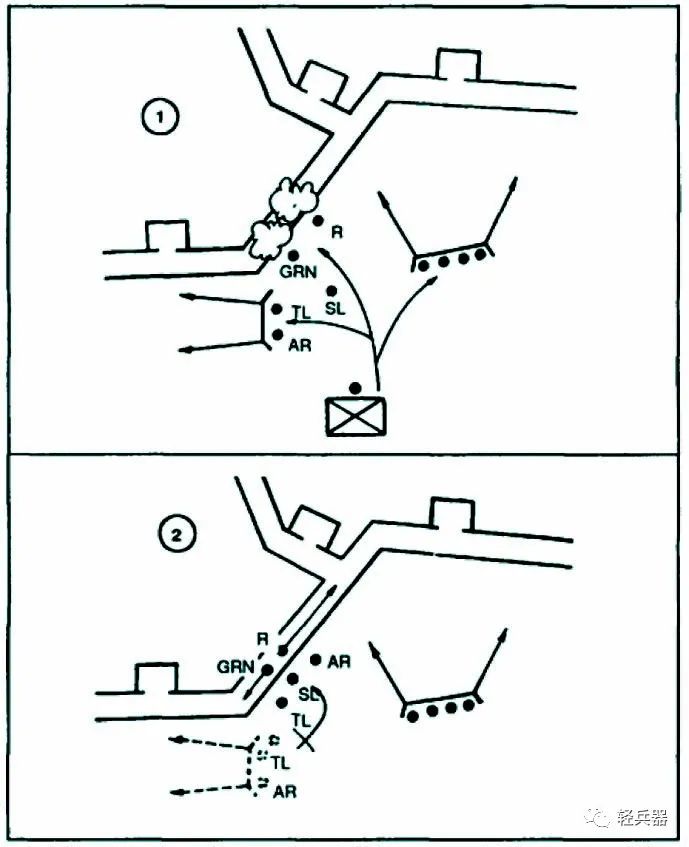
Examples from the US Army’s infantry squad combat regulations regarding room clearing and trench clearing. In such close-quarters combat, the light machine gunner also needs to maneuver flexibly.
After the Vietnam War, the M16A2 rifle, developed under the leadership of the US Marine Corps, replaced the M16A1. The M16A2 has a longer effective range; however, it can only fire in bursts of three rounds, which deprived US infantry squads of a fully automatic light weapon. As a substitute, the US military equipped the Belgian FN Minimi light machine gun, known as the M249 squad automatic weapon. At this point, each fire team was equipped with one M249 light machine gun, resulting in two (Army) or three (Marine Corps) M249s per infantry squad.
Interestingly, even today, the military role of the M249 gunner is not referred to as a “machine gunner,” but as an “automatic rifleman.” This nomenclature relates back to the BAR. When Browning developed the BAR, his original intention was to enhance the firepower of riflemen, but the weapon did not replace the standard rifle; instead, it became the first squad automatic weapon for the US military. After the M1 Garand semi-automatic rifle was introduced, the BAR remained as the squad automatic weapon. Thus, in US military terminology, the squad automatic weapon has been referred to as an “automatic rifle” ever since.
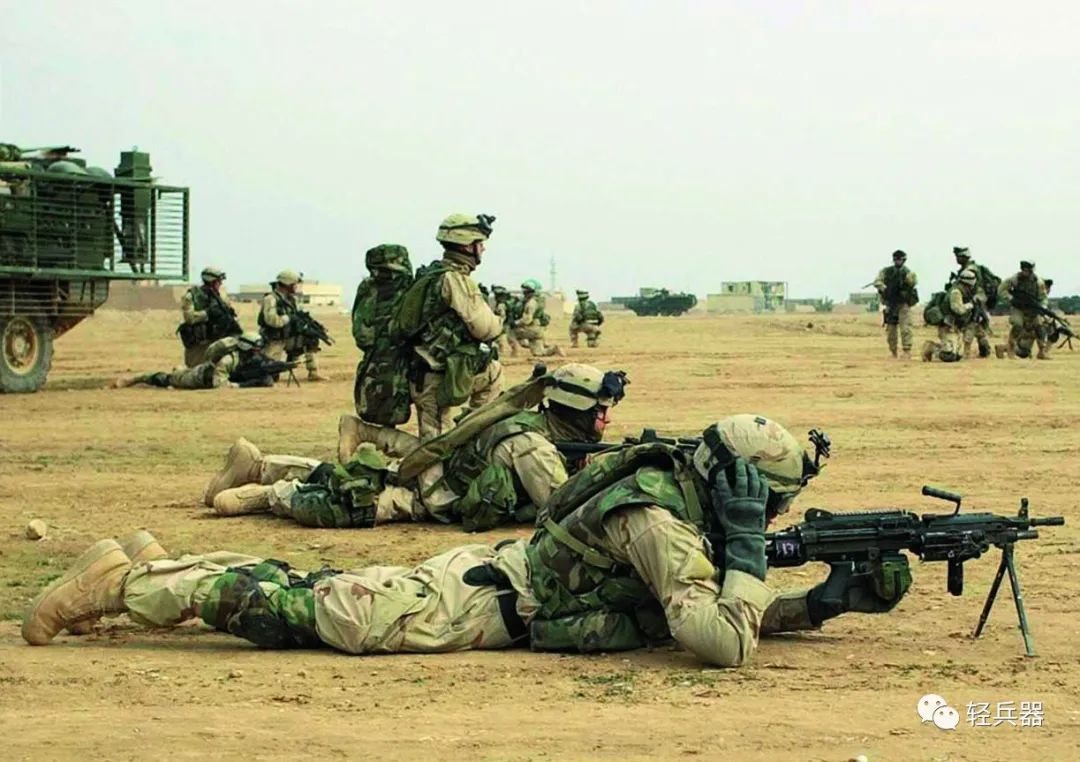

US troops in Iraq using light machine guns: whether standard models with paratrooper stocks, paratrooper models with standard stocks, or simply paratrooper models, all aimed to enhance mobility in urban combat.
The current M249 squad automatic weapon is comparable in weight to the BAR, but its belt-fed ammunition system provides greater firepower. While it has performed excellently over the years, the US military still finds it too heavy, especially in urban combat. To further enhance the mobility of Marine Corps gunners, the US Marine Corps began a project in 2001 named IAR, to evaluate the feasibility of replacing the M249 with lighter automatic weapons. IAR literally means “Infantry Automatic Rifle,” but as mentioned, it might be more appropriately translated as “Infantry Light Machine Gun.” The term “infantry” was added because the Marine Corps hoped this weapon could serve as a true individual weapon, requiring no assistant gunner—although modern US infantry squad structures do not assign an assistant gunner for the M249, the Marine Corps assistant automatic rifleman serves both as an independent rifleman and as a support for the M249 gunner, sharing spare barrels and some ammunition, essentially functioning as a part-time assistant gunner.
Selection Process of the IAR Light Machine Gun
The IAR trials were conducted by the 2nd Battalion, 7th Marines of the 1st Marine Division, aimed at assessing the effectiveness of the selected Colt AR, Singapore’s Ultimax 100, and the HK G36 automatic weapons compared to the M249 in squad and platoon-level combat, investigating whether these lighter automatic weapons could enhance combat efficiency.

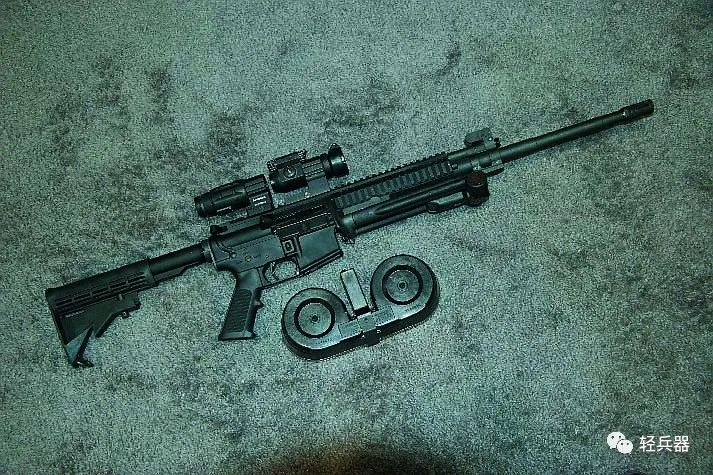
Colt’s IAR prototype released mid-2006, featuring a detachable bipod.
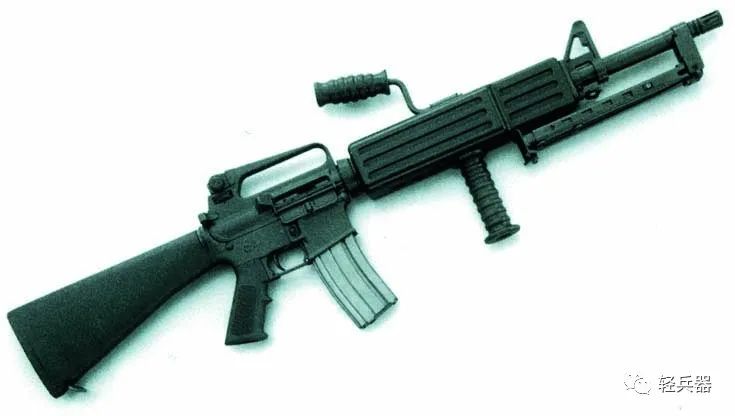
The first phase Colt AR is essentially a light machine gun variant of the M16A2.
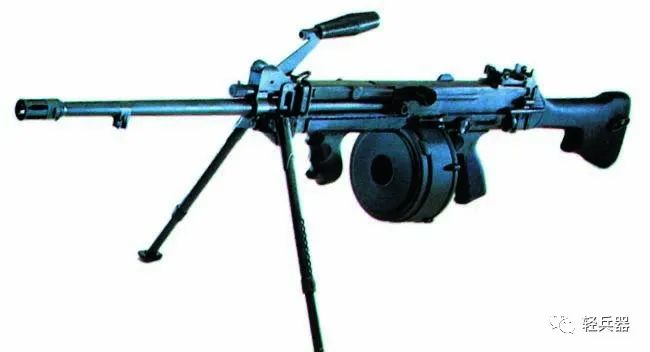
Ultimax 100 light machine gun used in the first phase of the IAR trials.
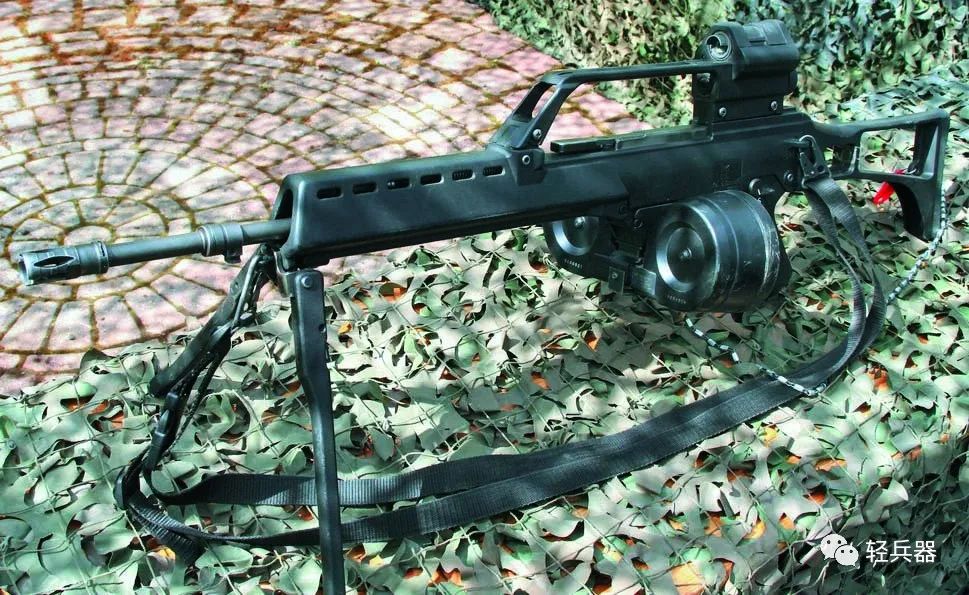
Although the HK G36 has a light machine gun variant, the MG36, this model was never produced or fielded. Therefore, in the first phase of the IAR trials, a G36 rifle with a bipod was used.
The first phase of the IAR project: evaluation.
The Colt AR (Colt Automatic Rifle) is essentially a heavy barrel version of the M16A2, with a structure and principle similar to the M16A2, weighing approximately 6.8kg, nearly double that of the M16A2. The increase in weight is primarily due to the heavy barrel. Other modifications include the addition of a hydraulic buffer to reduce the theoretical rate of fire to 650 rounds per minute and the use of a chambered round waiting mechanism to prevent rapid heating of the chamber during prolonged firing.
Singapore Technologies Kinetics’ Ultimax 100 is a light machine gun, comparable in class to the M249, but weighing less than 5kg and using a 100-round drum. This weapon also uses a chambered round waiting mechanism, has extremely low recoil, is easy to control, and has high burst accuracy. With a gas regulator, its rate of fire is adjustable from 450 to 600 rounds per minute.
The HK G36 is a light automatic rifle capable of automatic fire, differing from the first two models by using a chambered round waiting mechanism.
The trials were conducted in two phases. In the first phase, 48 newly trained Marine recruits were selected as test shooters to avoid biases from veterans accustomed to existing weapons, allowing for a fairer comparison of the four weapons (including the M249). These 48 Marines were divided into four teams of 12, each equipped with all four weapons simultaneously.
Through shooting comparisons in different environments, ranges, and target types, testers found that each weapon had its strengths and weaknesses. Regarding the Colt AR, shooters repeatedly made errors due to confusion between the chambered round and chamber empty mechanisms, as these young Marines retained the M16 chamber empty habit. Another issue was that Marines were more familiar with the M16A2, resulting in higher first-shot accuracy with the Colt AR, affecting testing fairness. For the Ultimax 100, shooters generally found the sight position too low and rearward, making shouldering and aiming uncomfortable and hindering sustained target acquisition, preventing it from fully utilizing its low recoil and rapid-fire advantages. The G36’s 3.5x sight was deemed too high magnification at 25 yards (22.9m) and 50 yards (45.7m), but favorable at 100 yards (91.4m). As for the M249, its weight and length made transitioning between firing positions cumbersome.
In summary, both the M249 and Colt AR were considered too heavy; the G36 could not maintain target observation while firing; and the Ultimax 100’s mechanical sights were poorly positioned and unsuitable for all body types (perhaps due to differences in physique between Americans and Singaporeans). Although the M249 was less accurate than the other three test weapons, it offered superior sustained firepower, with its major drawback being mobility. Thus, this round of trials did not provide sufficient justification for replacing the existing machine gun.
Following the conclusions of the first round of trials, the 1st Marine Division’s 2nd Battalion began comparative trials simulating real combat: integrating the four test automatic weapons into various sizes of combat teams (fire teams, squads, or platoons) and conducting tactical drills in different environments. Since this round of trials was not merely target shooting, the M249’s mobility shortcomings became more pronounced, especially during urban combat exercises. (To be continued)
(This article was published in the “Light Weapons” magazine, August 2009 issue, with edits in the public account)

Confirmed! The first reader annual meeting of “Light Weapons”!
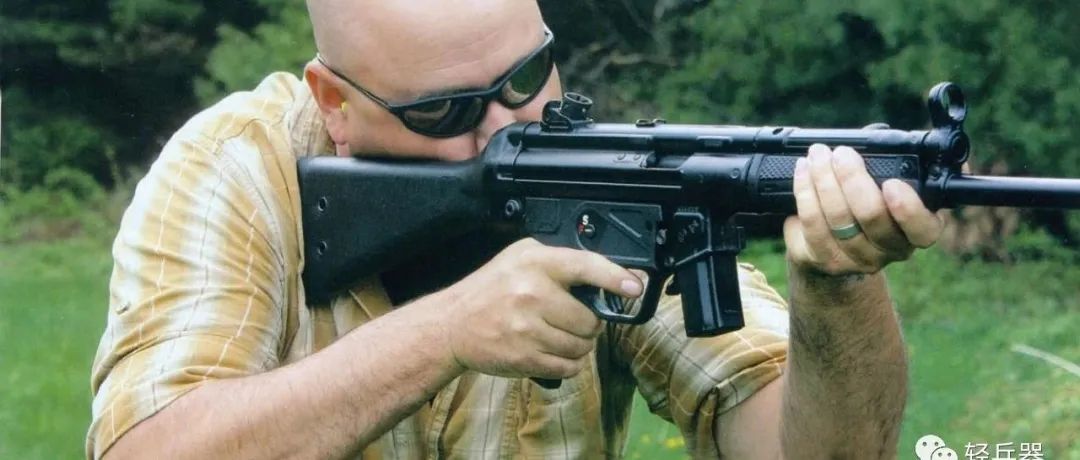
HK94’s Turkish cousin: MKE AT-94A2 9mm submachine gun
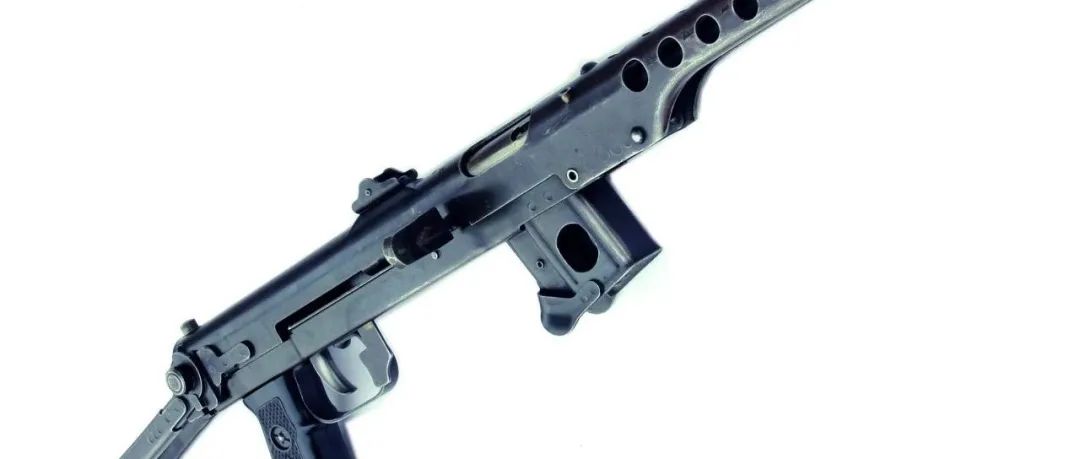
Born from harsh environments, achieving success in the Korean War: A history and usage of the Type 54 7.62mm submachine gun (Part 1)
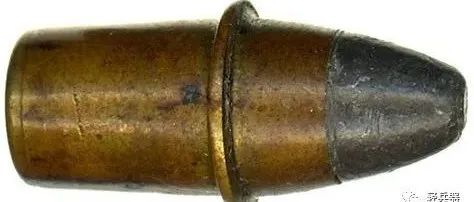
Cold ammunition trivia: Those years, humans had these four brainwaves for rimfire cartridges.
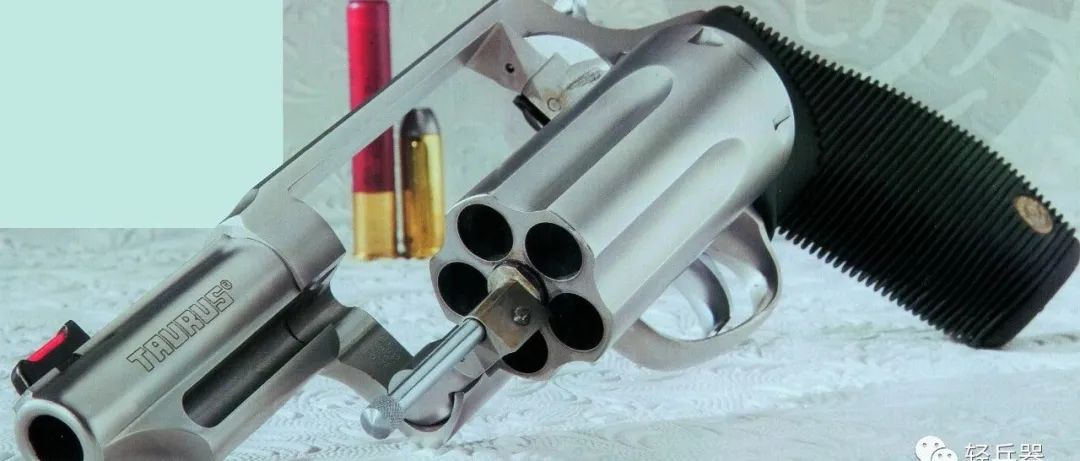
Adaptable “hand cannon”?: The Taurus “Judge” revolver that can fire shotgun shells.
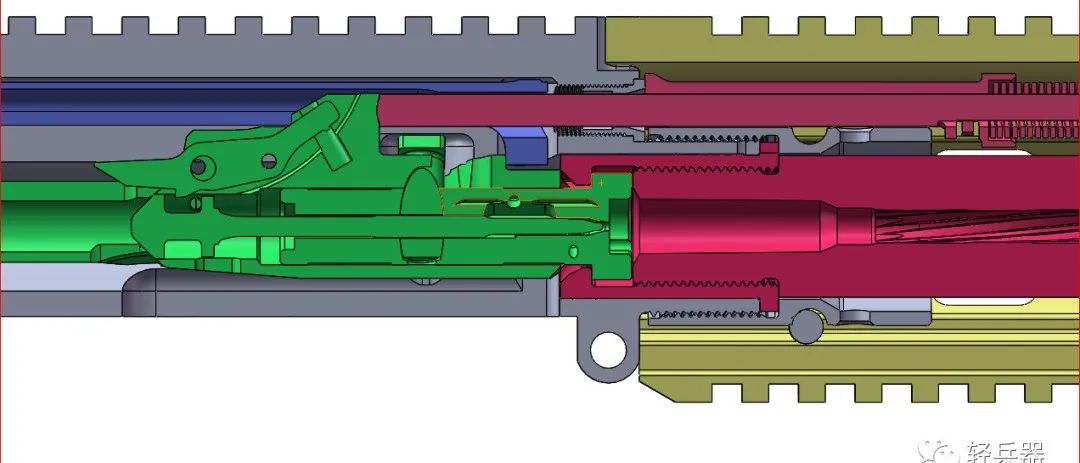
Examining the innovative features of the HK416 rifle.
Editor: Zeng Zhenyu Li Hao
Proofreader: Wei Kaigong
Official Weibo of Light Weapons: @Light Weapons
Light Weapons official headline: Light Weapons
Light Weapons Kuaishou account: QBQ_208
Light Weapons Douyin account: qingbingqi